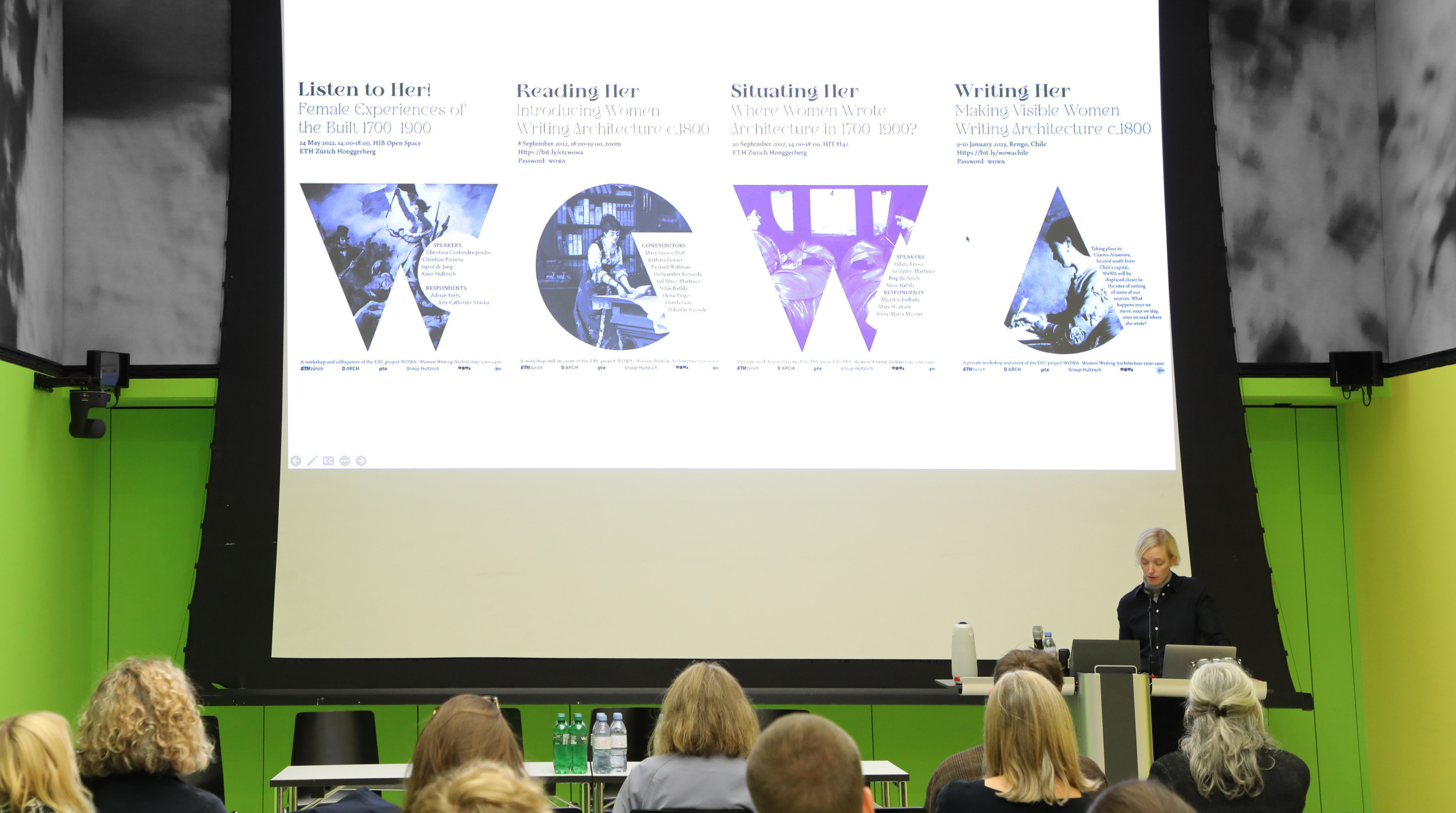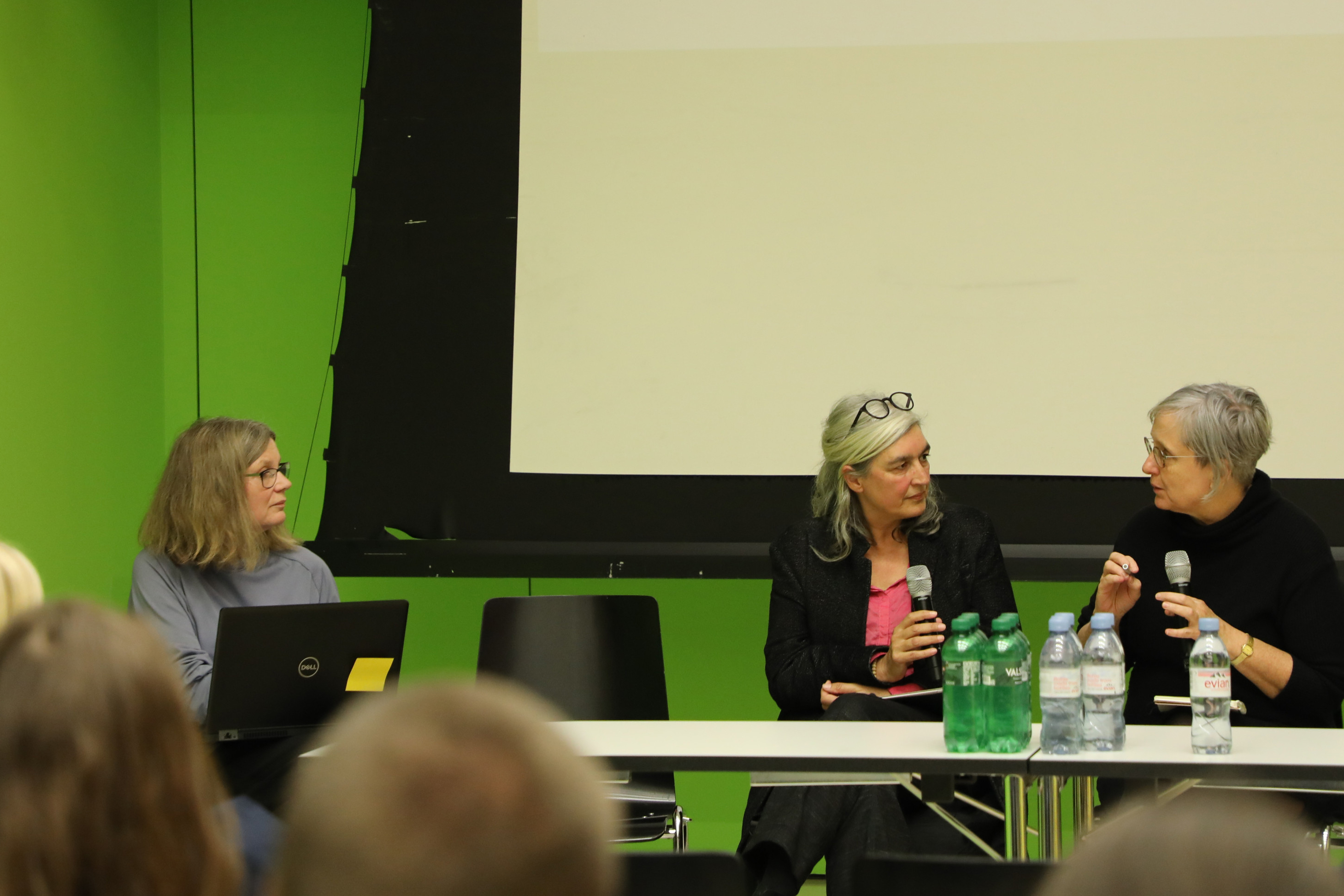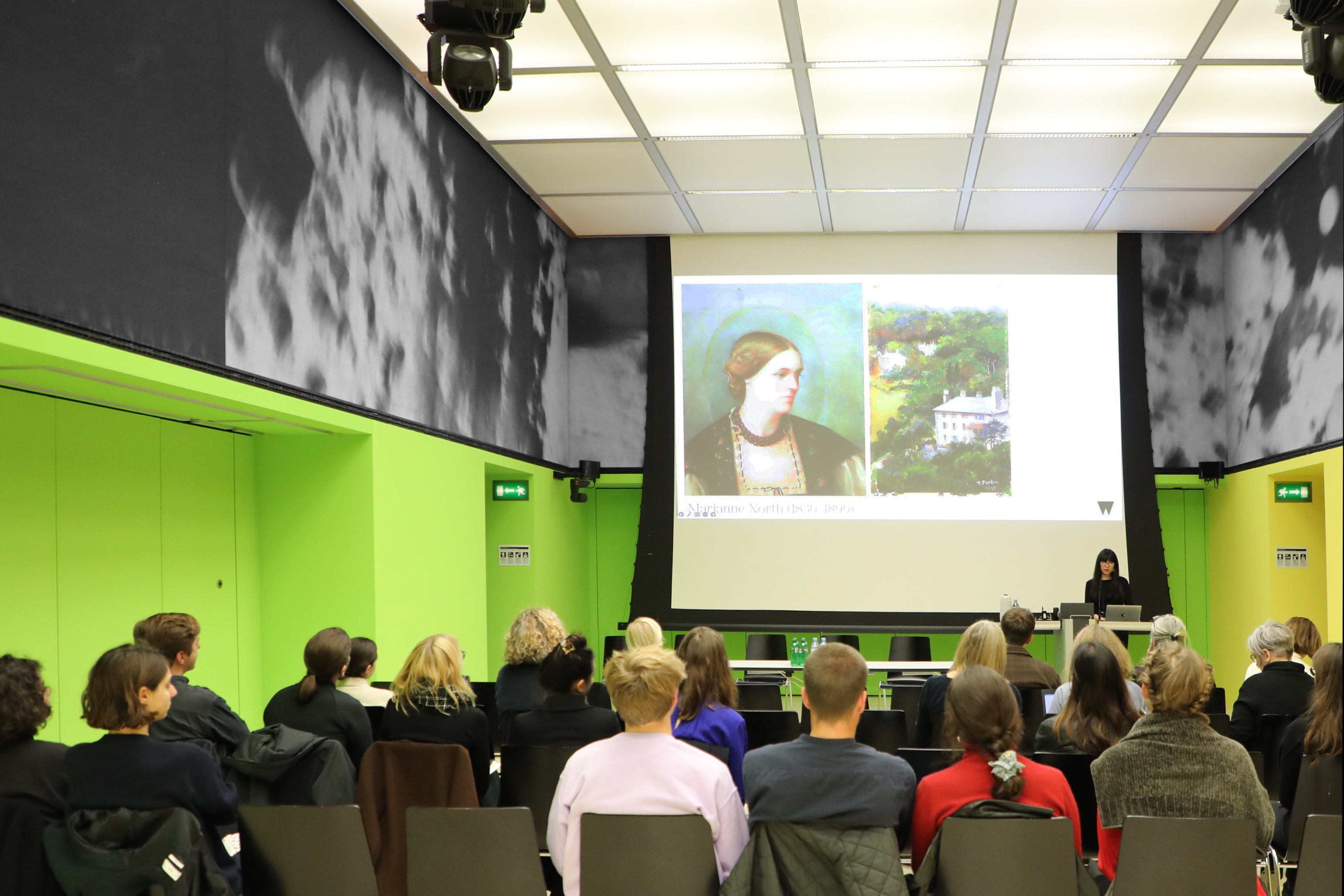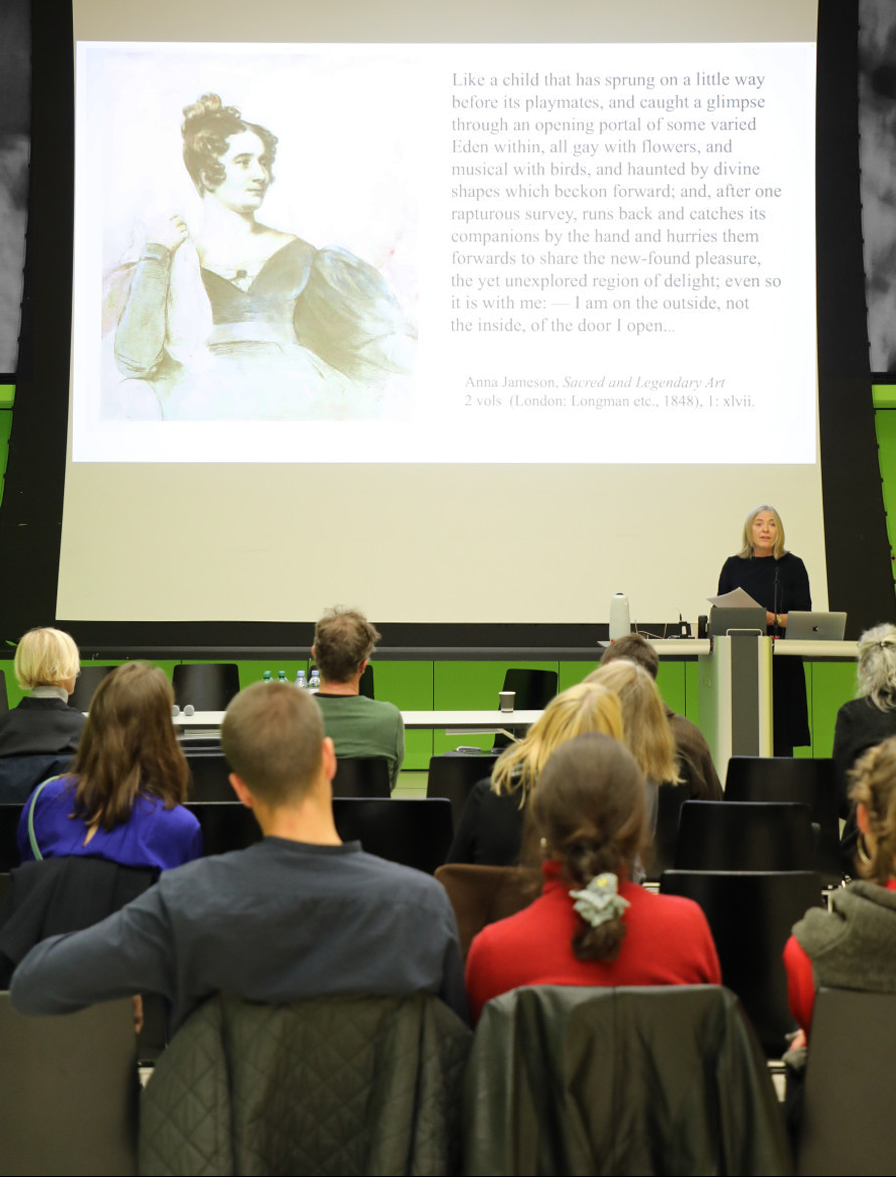WoWA Workshop 3

Situating Her: Why Women Wrote Architecture 1700-1900
Date: Friday, 30 September 2022
Location: Siemens Auditorium (HIT E51)
Time: 14.00-18.00
In this workshop and colloquium, we situate women writing architecture in the 18th and 19th centuries. We explore where she wrote architecture, how she assumed a position of rhetorical authority, and why she wrote on and around the subject. In turn, we situate ourselves as her readers, reading with her and with each other, to find new ways of writing situated histories.
After a private reading workshop in the morning, in which the WoWA team and guests will perform a close reading (and listening) of a historical text authored by a woman, the afternoon will open to the public with a colloquium presenting three speakers and two respondents. Talks revolve around knowledge making both through travel and in the academy as well as the social and political conditions of architectural experience.
Also join us at @ercwowa via Twitter and Instagram.
Also join us at @ercwowa via Twitter and Instagram.
Colloquium

Gaze, Memory and Politics. Elements and Effects of Architecture in Harriet Jacob and Barrett Browning
Prof Brigitte Sölch, Heidelberg University
Shortly after the middle of the 19th century, when architecture had long since been reflected and theorized in terms of the effects of beauty and sensual experience (aesthetics), two texts appeared that could not be more contrary: the memoirs of a former slave girl in the USA who succeeded in escaping and being freed (Harriet Jacobs, Incidents in the Life of a Slave Girl, 1861) and the prose of a politically interested Englishwoman in Florence (Barrett Browning, Casa Guidi Windows, 1851). What insights can be gained from comparing the two texts in terms of elements and effects of architecture, which concern categories such as place, window, wall, roof, door, light and shadow? And what does this say about both the possibilities of seeing and describing and the social and political conditions of experiencing architecture?
Hosting Marianne North: Encounters between women, places and cultures in Chile, 1884
Dr Sol Pérez Martínez, ETH Zurich
Marianne North (1830-1890) was a British botanical artist who travelled the world between 1851 and 1884, recording landscapes and their ecologies. Never recognized as an artist or a scientist because of her novel approach to painting plants and flowers, her work was celebrated by the British public after she donated more than 800 paintings as well as the gallery building to display them in Kew Gardens, London. To complement her pictures, she wrote detailed travel accounts (published posthumously by her sister) thus increasing her popularity. As a result, North’s work has been endlessly reprinted and discussed. However, most of the scholarship surrounding her work focuses on her life and her travels to faraway lands. Following literary scholar Mary Louise Pratt, this paper focuses instead on North’s journey as a ‘movement between points of hospitality…where movers are received by stayers, people in place’ (Pratt, 2022). North’s last journey was a long excursion to the deep South of Chile in 1884, looking for a tree unique only to this area of the world. In this paper, I will explore both the relationship between North and the Chilean women, the places and culture that hosted her and how this experience changed her gallery when she returned home.

‘On the outside, not the inside, of the door I open’: Gallery-going with Anna Jameson
Prof Emerita Hilary Fraser, Birkbeck, University of London
My subject is pioneering art historian Anna Jameson (1794–1860), widely admired in her day but routinely dismissed in the modern historiography of the discipline as a mere populariser. She had a complex insider/outsider relationship with the art world. An advocate for art education and the democratisation of knowledge, she refused the role of gatekeeper, preferring to open up collections that, for many, existed unimaginably behind closed doors. Her writerly persona was of a woman only one step ahead of her ‘uninitiated’ readers, her style designedly inviting, companionable. Her popular appeal was principled; her modest authorial identity strategic. The prevalence of architectural metaphor in nineteenth-century writing about women’s experience and the well-known ideological division of domestic and public space along gendered lines encourages a broad approach to the subject of women and the built environment. I will focus on Jameson’s Handbook to the Public Galleries of Art in and near London (1842) and Companion to the Most Celebrated Private Galleries of Art in London (1844). Promoting access to the collections requires reconceptualising the buildings that house them, and who enters them. Introducing art to the many complicates categories of public and private in ways that reflect the writer’s own positionality.
‘All the curiosityes or requisites for ornament, pleasure and use’: embodied experience and architectural description in the travel diaries of Celia Fiennes
Matthew Lloyd Roberts, Cambridge University
Celia Fiennes (1662–1741) was an elite English woman from an historically parliamentarian and non-conformist family. She spent much of the 1690s on a series of journeys, visiting every county in England and keeping a diary of her observations and reflections. These diaries are a rich store of knowledge about the economic and social culture of England and oft cited in histories of the period. However, due to her broad range of interests and her position outside of architectural and intellectual culture, the diaries have rarely been taken as seriously as they deserve by architectural historians. Fiennes was keenly interested in the built environment, and her descriptions of architecture offer a vital insight into the way she experienced and understood her surroundings. Whilst her diaries were not published until long after her death, in the act of compiling them she wrote a preface which framed her project to encourage curiosity and travel as part of a virtuous life.This paper will closely analyse Fiennes’ use of language in describing architecture and ask what it might tell us about her concerns and priorities, reading her writing in the context of broader debates about buildings and urbanism in England in this period. Rather than emphasising her position outside of elite architectural culture, it will consider the complex questions which characterise her writing, and explore her interest in materials, craft, design and structure.
Biographies
Brigitte Sölch is Professor of the History of Architecture and Art History at Heidelberg University. She has been Professor of the History and Theory of Architecture/Design History at Stuttgart State Academy of Art and Design (2018-2021) and spent the spring term 2019 in New York City as Fellow at the Italian Academy for Advanced Studies, Columbia University. She was assistant professor and assistant curator at various universities and museums before holding several positions at the Kunsthistorisches Institut in Florence–Max-Planck-Institute (2008–2018). Her recent publications include the book Kunsthistorikerinnen 1910–1980: Wege Methoden Kritiken, edited with K. Lee Chichester (2021).
Mari Hvattum is a professor of architectural history at The Oslo School of Architecture and Design, where she arrived after teaching in Britain and the Czech Republic. Her many books include Gottfried Semper and the Problem of Historicism and the edited collections Modelling Time and The Printed and the Built.
Mari Hvattum is a professor of architectural history at The Oslo School of Architecture and Design, where she arrived after teaching in Britain and the Czech Republic. Her many books include Gottfried Semper and the Problem of Historicism and the edited collections Modelling Time and The Printed and the Built.
Hannah le Roux is an architect, educator and theorist. Her work in all these areas revisits the modernist project in architecture in Africa, and considers how its transformation through the agency of Africa presents a conceptual model for contemporary design. From a Southern African perspective she considers how apartheid and colonial constructions erase and are overlain by other human actions. She has written on these dynamics for Blank_architecture, apartheid and after; Trade Routes: Johannesburg Biennale; Afropolis; Social Identities; Architecture and Culture, and The Journal of Southern African Studies. She has also curated exhibitions in Johannesburg, Venice, Brussels and Rotterdam, engaged with the spatialities of diaspora coffee ceremonies and the soccer culture of earth fields through design research, and designed alterations to modernist buildings and public spaces in Johannesburg. In 2017 she was selected as a Canadian Centre for Architecture / Mellon research fellow on Architecture and the Environment, and as a Fulbright Principal Candidate for an African Research Scholarship.
Hilary Fraser is Emerita Geoffrey Tillotson Chair of Nineteenth-Century Studies at Birkbeck, University of London where she was also Dean of Arts. She has written monographs on the Victorians and Renaissance Italy (where her interest in Anna Jameson began), aesthetics and religion in Victorian literature, gender and the Victorian periodical, nineteenth-century non-fiction prose, and women writing art history in the nineteenth century. Her scholarly edition of The Renaissance, volume 1 of The Collected Works of Walter Pater, will be published by Oxford University Press in 2023. She is currently working on a book on art writing, also for OUP.
Maarten Delbeke holds the Chair of the History and Theory of Architecture at the Department of Architecture at ETH Zurich. He researches and teaches the history and theory of art and architecture in Europe from the 17th century to the present, and is active as an architecture critic.
Maarten Delbeke holds the Chair of the History and Theory of Architecture at the Department of Architecture at ETH Zurich. He researches and teaches the history and theory of art and architecture in Europe from the 17th century to the present, and is active as an architecture critic.
Sol Perez-Martinez, is an architect, educator and a postdoctoral fellow at the gta, ETH Zürich in the ERC project Women Writing Architecture 1700-1900. Sol ran an architectural practice in Chile where she and her firm partners developed a public school in Chile, leading her to research about architecture, education and politics. Since then, Sol has collaborated with teachers, artists and architects to widen the participation of young people, women and communities in the built environment. Sol is a qualified architect in Chile, with master degrees in architecture and architectural history. She holds a PhD in Architecture & Education from the Bartlett School of Architecture and the Institute of Education, UCL. Sol teaches at The Bartlett’s MSc Learning Environments and has lectured internationally, including at the Whitechapel Gallery, Tate Exchange and Nottingham Contemporary.
Matthew Lloyd Roberts is a second-year PhD student at the Ax:son Johnson Centre for the Study of Classical Architecture, Cambridge University. His research considers cultural responses to architectural change in Britain, 1660–1750. He hosts the podcast Architectural History for the Society of Architectural Historians of Great Britain, and produces the independent architecture podcast About Buildings + Cities.
Matthew Lloyd Roberts is a second-year PhD student at the Ax:son Johnson Centre for the Study of Classical Architecture, Cambridge University. His research considers cultural responses to architectural change in Britain, 1660–1750. He hosts the podcast Architectural History for the Society of Architectural Historians of Great Britain, and produces the independent architecture podcast About Buildings + Cities.
Media



















